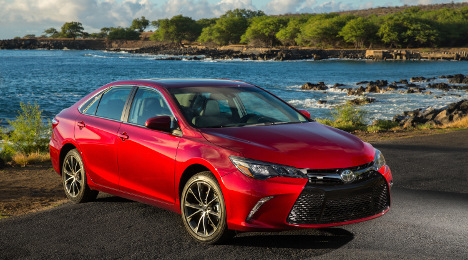Toyota jumps on VR ads; will dealers follow?

Toyota Camry XSE. Photo credit: Toyota.
Journalism is going virtual, and automotive is along for the ride.
Gannett Co. released a virtual reality news show last week as part of its USA TODAY NETWORK titled “VRtuallyThere," and the news show — said to be the first presented in VR — includes a virtual reality “cubemercial” ad from Toyota.
Toyota is the show’s premier sponsor and is promoting its 2017 Camry through the spot.
“We believe in creating amazing experiences for our guests, so we’re excited to help launch USA TODAY NETWORK’s innovative VR show, bringing incredible virtual reality experiences to its audience,” Toyota Motor Sales media manager Lisa McQueen said in a news release from Gannett. “The NETWORK’s approach to bold storytelling and use of new mediums aligns with our brand and our creative approach for the new 2017 Toyota Camry.”
The “cubemercial” is a virtual reality ad unit designed specifically for this concept, Gannett said.
Virtual reality ‘an extension’ of ad strategy
Jeremy Anspach is the chief executive officer of PureCars, a company that specializes in automotive digital advertising.
So, Auto Remarketing asked him what his initial reaction was to learning about Toyota’s VR advertising endeavors.
“I think virtual reality is young; it’s early stage. I think it’s nice to see that Toyota’s being an early adopter in new technologies,” he said.
However, whether you’re advertising in virtual reality or other media, when it comes to the foundation of strong advertising, “you want to show the right message at the right time wherever the consumer spends their time electronically as it relates to digital media,” he said.
“So, if the user is on Snapchat, why wouldn’t you want to advertise to them there? Or Facebook, or Google search, etc.,” Anspach said. “I think VR is just going to become an extension of that as there are more and more users that are spending considerable amounts of time on the platform.”
Easily translatable to dealers?
It’s one thing for automakers to get in the VR mindset. But what about dealers, who may be targeting a much narrower set of viewers? Would automaker use of VR easily translate to dealer use?
For Anspach, the answer isn’t quite clear at this point.
“The reason I say that is, for a dealer to find value in a media channel … you need to have enough reach and obviously enough of an audience to make a difference,” he said.
“And if you think about a dealer, they’re generally selling vehicles in a very small radius around their dealership, whether it’s new or used, and I don’t know if there would be enough users who are leveraging this VR that Gannett is offering to make a difference,” Anspach said, “where a manufacturer’s footprint is generally the U.S., or close to it.”

 View The Latest Edition
View The Latest Edition

